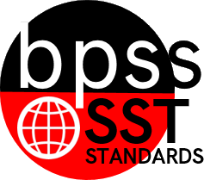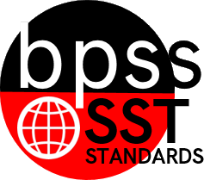SST-08.2.04
|
8th Grade SST Targeted Benchmarks
Standard 2: History
SST-08.2.04 Explain how the concept of Manifest Destiny impacted national policy (e.g., War with Mexico, Gadsden Purchase, imperialism, Gold Rush, foreign policy).
|
Student Learning Targets:
Knowledge Targets
- I can explain the concept of Manifest Destiny and its impact on westward expansion (e.g. Louisiana Purchase, Missouri Compromise, Texas, Gadsden Purchase, California, and Florida).
- I can explain how the U.S. added to its territory through treaties and purchases.
- I can identify the purposes of the Indian Removal Act and its consequences.
- I can recognize or recall specific terminology, such as: annex, cede, forty-niners, Texas Rangers, Vaqueros, empresarios, prospect, missionaries, gold rush, prairie schooners, Conestoga wagons, placer mining; trails west (e.g. Oregon, Santa Fe, California, Old Spanish, Mormon)
- I can recognize or recall specific people/places, such as: People/Places (e.g. Sam Houston, Santa Anna, John Sutter, Donner Party, Levi Strauss, Marcus Whitman, James K. Polk, Stephen F. Austin, John C. Fremont, Zebulon Pike
- I can list the reasons (economic, political, and social) people would move west.
Reasoning Targets
- I can defend reasons for moving west in spite of the major challenges facing settlers.
Skills (Performance) Targets
- I can demonstrate extended knowledge and understanding by independently and consistently connecting this standard to real world situations.
Product Targets
- I can create a map showing the land deals related to manifest destiny.
Proficiency Scale
| Score |
|
Description |
Sample Activity
|
| 4.0 |
In addition to Score 3.0, in-depth inferences and applications that go beyond what was taught.
The student:
demonstrates extended knowledge and understanding independently and consistently by connecting to historical and current situations. |
- |
| |
3.5 |
In addition to Score 3.0 performance, the student demonstrates in-depth inferences and applications regarding the more complex content with partial success. |
| 3.0 |
The student can:
- explain the concept of Manifest Destiny and its impact on westward expansion (e.g. Louisiana Purchase, Missouri Compromise, Texas, Gadsden Purchase, California, and Florida).
- explain how the U.S. added to its territory through treaties and purchases.
- identify the purposes of the Indian Removal Act and its consequences.
- describe reasons (economic, social, political) for moving west in spite of the major challenges facing settlers.
- create a map showing the land deals related to manifest destiny.
|
- |
| |
2.5 |
The student demonstrates no major errors or omissions regarding the simpler details and processes (Score 2.0 content) and partial knowledge of the more complex ideas and processes (Score 3.0 content). |
| 2.0 |
There are no major errors or omissions regarding the simpler details and processes as the student:
- recognizes or recalls specific terminology, such as:
- annex, cede, forty-niners, Texas Rangers, Vaqueros, empresarios, prospect, missionaries, gold rush, prairie schooners, Conestoga wagons, placer mining
- trails west (e.g. Oregon, Santa Fe, California, Old Spanish, Mormon)
- recognizes or recalls specific people/places, such as:
- People/Places (e.g. Sam Houston, Santa Anna, John Sutter, Donner Party, Levi Strauss, Marcus Whitman, James K. Polk, Stephen F. Austin, John C. Fremont, Zebulon Pike.
- lists the reasons (economic, political, and social) people would move west.
However, the student exhibits major errors or omissions regarding the more complex ideas and processes.
|
- |
| |
1.5 |
The student demonstrates partial knowledge of the simpler details and processes (Score 2.0 content) but exhibits major errors or omissions regarding the more complex ideas and procedures (Score 3.0 content). |
| 1.0 |
With help, the student demonstrates a partial understanding of some of the simpler details and processes (Score 2.0 content) and some of the more complex ideas and processes (Score 3.0 content). |
- |
| |
0.5 |
With help, the student demonstrates a partial understanding of some of the simpler details and processes (Score 2.0 content) but not the more complex ideas and processes (Score 3.0 content). |
Resources
Websites
- www.historychannel.com
- www.biography.com
- Oregon Trail software program/apps
- "America: Story of Us"
- "Men Who Built America"
- "How the States Got Their Shapes"
- "Into the West" (TNT movie series)
- John Lee Hancock's "The Alamo"
- Ken Burns' "The Journey of the Corps of Discovery"
- "Bury My Heart at Wounded Knee"
Vocabulary
|
 BPS District Social Studies Standards Book
BPS District Social Studies Standards Book

 Standard 1:
Standard 1: